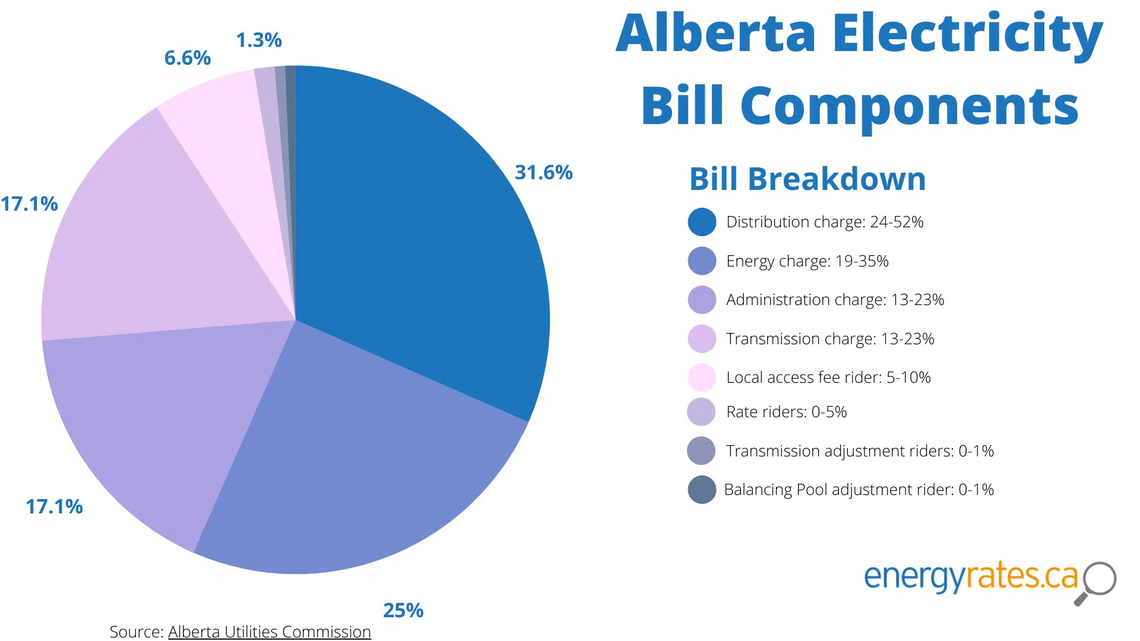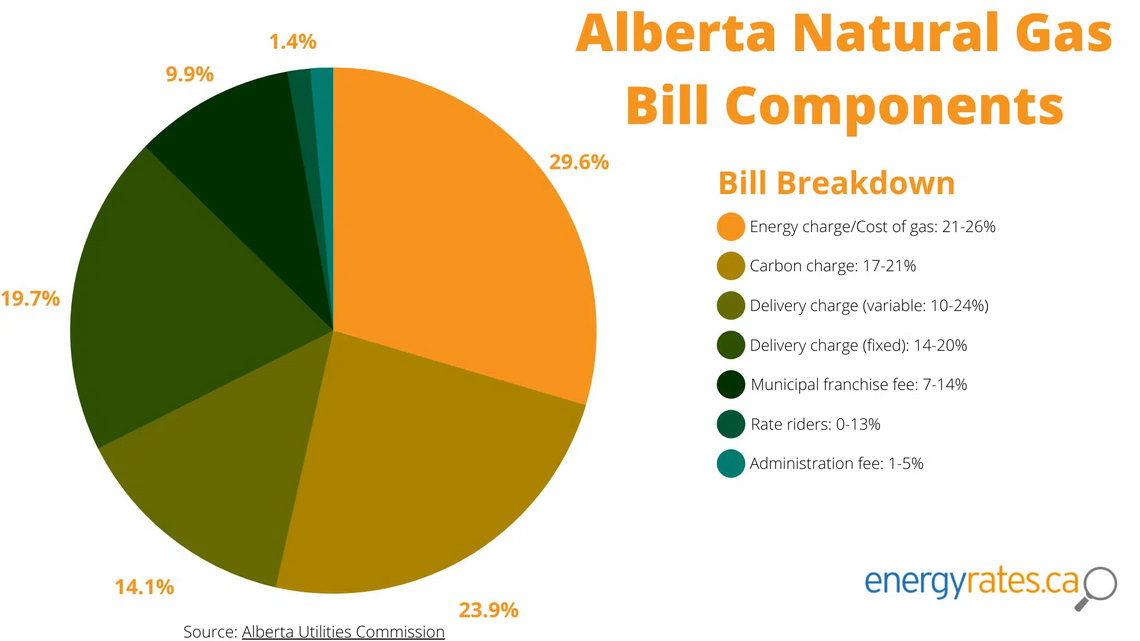Why is My Energy Bill So High?
Albertan families pay some of the highest electricity rates in the country. For information on rates, help understanding your energy bills, and to make informed energy choices, Albertans can visit the Utilities Consumer Advocate website. Photo credit: Moyo Studio

In 2017, electricity rates in Alberta were at historic lows. But ever since, they’ve been climbing — and today, Albertans pay some of the highest rates in the country. So what’s behind the hike? Turns out, it is a variety of things.
Climate change
Climate change — and the extreme weather that accompanies it — plays a major role in the total cost of your energy bill. Extreme weather — cold snaps and heat waves — increase demand on energy infrastructure as we struggle to heat and cool our homes and businesses. Demand for water also increases during heat waves, but as many parts of Canada grapple with drought and aging infrastructure, an uninterrupted source of water is not guaranteed. Calgary’s water main break is a perfect example of how fragile our resource infrastructure is.
Wildfires also put pressure on our infrastructure. In 2023, over a million hectares of land burned across the country, affecting oil and gas production (an estimated 319,000 BOE/D (Barrels of Oil Equivalent Per Day) were inaccessible, approximately 3.7% of the Canadian total production), and multiple pipelines were also shut down. This led to less export to the US, lower production, and a spike in cost for consumers. Wildfire smoke also drastically reduces air quality, increasing the need for air purifiers which increases energy demand.
In the winter, unpredictable weather also strains our energy infrastructure — when demand soars, so do prices. A cold snap in January 2024 put Alberta’s power grid under extreme pressure, leading he Alberta Emergency Management Agency (AEMA) to issue an emergency alert urging Albertans to cut back their energy use to the bare essentials or face rolling blackouts. The event was a stark reminder that our energy resources have limits, and climate can have a huge effect on what’s available to us. As weather becomes more extreme and unpredictable, events like this could become more common.
Pricing structure
Since 2001 and the deregulation of the utilities industry, Albertans have had access to retailer-provided electricity. Deregulation was supposed to offer more choice by allowing different energy providers to enter the market, which in turn would drive down the cost of electricity for customers. In order to ensure there was a baseline price, the Alberta Utilities Commission set what’s known as a “Regulated Rate” for electricity prices. The Regulated Rate Option (RRO) is meant to fairly compensate providers for their costs, and ensure customers pay a fair price.
The RRO is based on the current market price of electricity in Alberta, and takes into account factors that may affect cost, such as weather or supply and demand. Since 2010, the RRO has been calculated monthly, so the rate varies depending on short-term conditions. People who don’t have a fixed-rate contract with a utility provider, or who are on a floating rate, have their price determined by the RRO.
Between January and March 2023, the Alberta government capped the RRO at 13.5 ¢/kWh to help address the rising cost of energy during that winter. All costs above the cap were deferred — essentially, utility companies were unable to charge consumers above the rate cap, but could recoup costs after the cap was lifted. To cover the deferred costs, the government loaned utility companies approximately $200 million. But that loan had to be paid back, so between April 2023 (when the cap ended) and December 2024, RRO customers paid an additional 2-4 ¢/kWh each month, roughly $10-$20 per monthly bill.
Roughly a third of Albertans are on the RRO. Those on the RRO or a floating rate with a retailer are experiencing significant fluctuations in their bills.
In addition to the fluctuations in the RRO, many people are paying higher fees on their energy bills. These fees include costs for transmission and delivery, as well as administration fees and other riders.


Effective tips for reducing your energy bill
Watch the rates. Keep an eye on electricity and natural gas rates from your provider. Most energy retailers allow you to swap between floating and fixed rates with notice. Floating rates can seem like a better deal when rates are low, but they can quickly become more expensive than the fixed rate if market forces change. If the rate is competitive, consider swapping to a fixed rate — you’ll have a more consistent charge every month. Visit the Alberta Utilities Consumer Advocate website for tools and more information.
Look for savings or issues around your house. Drafty doors and windows, leaky faucets and toilets, and inefficient lights and appliances can all dramatically increase your bill, sometimes without you even knowing it.
- Do an audit and make consider the following actions:
- Fix leaky toilets and faucets.
- Consider upgrading your windows and doors to ones with better insulation. If that’s not an option, there are other weatherproofing options available without replacing the full window/door. You can purchase insulating wraps for windows, and draft stoppers for doors.
- Replace all your lightbulbs with energy efficient LED bulbs, and consider using timers or motion sensors to limit the possibility of leaving lights on.
- Check your furnace filters, or better yet, get your furnace inspected.
- Consider using a smart thermostat such as the Google Nest learning thermostat that can adapt to trends in your home and automatically set temperatures as needed. If you work away from home, the thermostat can automatically turn off the heating while you’re gone, and back on again when you return.
- Wash your clothes in cold water when possible.
- Keep an eye out for phantom energy users such as electronics and chargers that are constantly drawing power.
- Turn off your computer when you aren’t using it.
- Use energy efficient settings on appliances wherever you can.
Have a professional audit done. A professional energy auditor can tell you where your home or business can be more efficient and which improvements will help reduce your energy consumption and bills.
Get educated. Organizations like Empower Me provide education in the form of energy mentors and multi-language workshops, and even offer home upgrade programs at little to no cost for households that qualify.
And, of course, you can learn more for free through Mobilizing Alberta’s e-course, Preparing Albertans for Climate Change.
